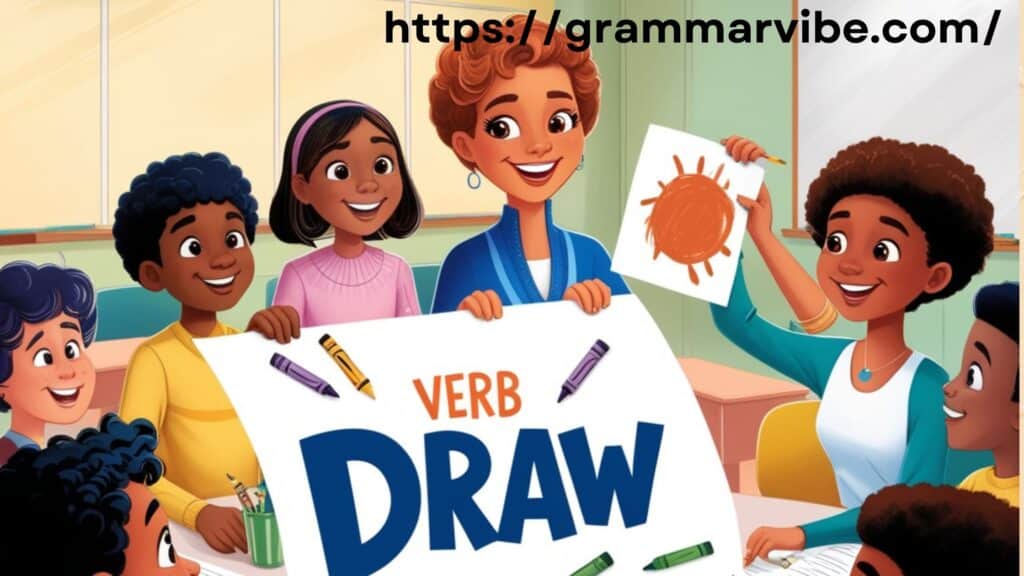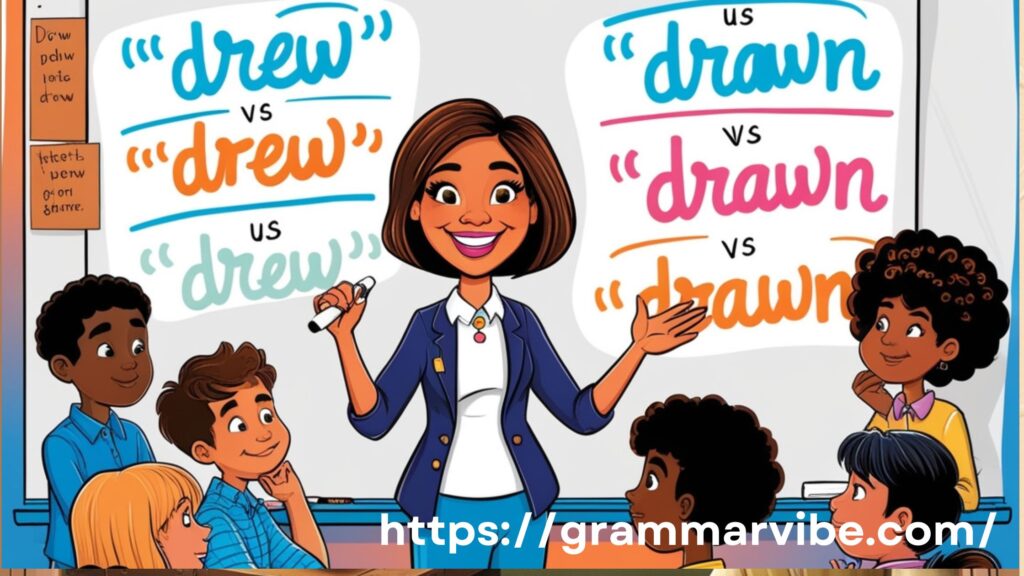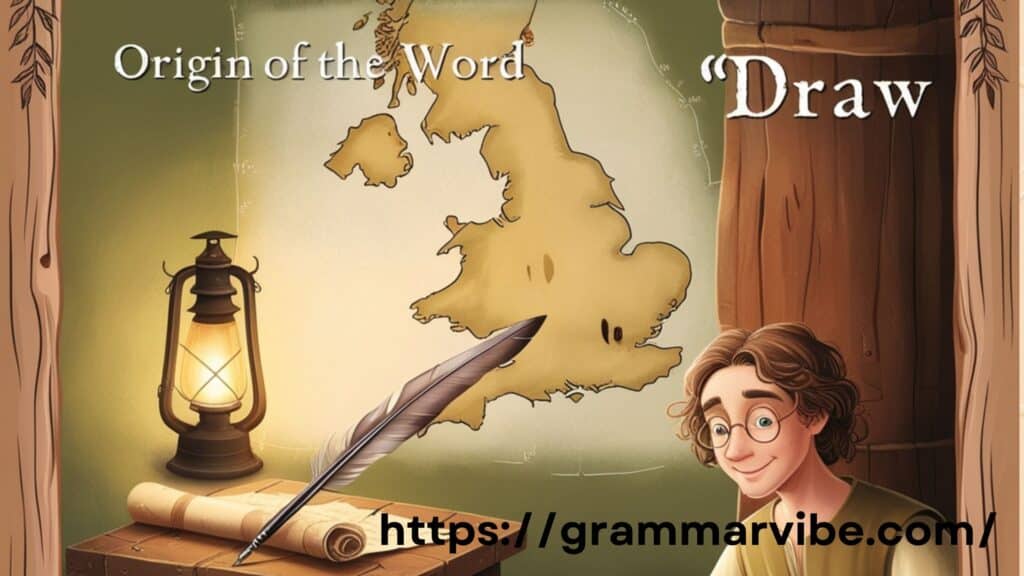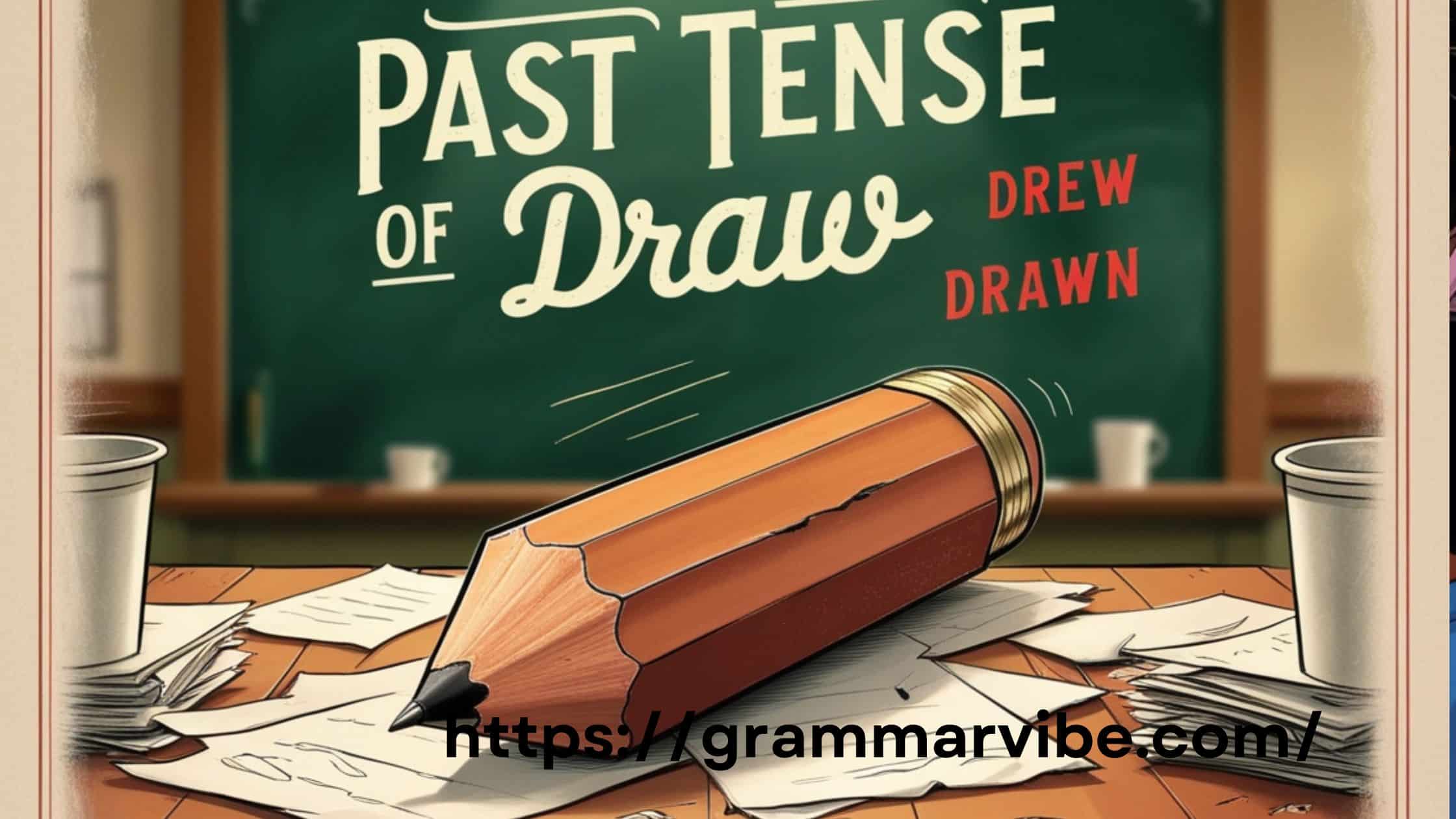The English language can be tricky, especially when it comes to irregular verbs like “draw.” Many struggle with the correct past tense form: is it “drew” or “drawn”? This common confusion stems from the verb’s multiple forms and their specific uses.
The verb draw can seem straightforward, but its past tense forms—drew and drawn—often cause confusion. Understanding when and how to use these terms is crucial for clear and correct communication. In this article, we’ll break down the past tense of draw, its various forms, and provide example sentences to clarify their usage.
Understanding the Verb “Draw”

At its core, the verb draw refers to creating something by making marks on a surface, often with a pencil, pen, or similar tool. However, draw has multiple meanings beyond sketching or illustrating, and those meanings influence how the verb behaves in different tenses. We’ll explore those forms and their meanings here.
You might also like Witness’ or Witness’s or Witness
Verb Tenses of Draw
Like many verbs, draw takes on different forms depending on the tense:
- Present tense: I draw every day.
- Simple past: Yesterday, I drew a landscape.
- Past participle: The plan has been drawn up.
- Future tense: Tomorrow, she will draw the blueprint.
The present tense and future tense forms of the verb are quite simple, but it’s the past forms—drew and drawn—that often trip up learners. Let’s explore those in detail.
You might also like Wife’s or Wives’
Simple Past: Drew
The simple past tense of draw is drew. We use this form to describe actions that were completed at a specific time in the past. It’s important to note that the action is already over, and there’s no connection to the present moment.
Example Sentences Using “Drew”:
- Last night, she drew a portrait of her dog.
- In art class, we drew landscapes with charcoal.
- He drew the design for the new house last week.
In these sentences, the action of drawing is fully complete, and the word drew signals that the event took place in the past.
You might also like Luis’ or Luis’s
Past Participle: Drawn
The past participle of draw is drawn, which is used in more complex verb constructions. Often, you’ll find drawn in passive constructions or when forming the perfect tenses.
Example Sentences Using “Drawn”:
- The plans had been drawn up before the meeting.
- The curtains were drawn to block out the sunlight.
- By the time we arrived, the blueprint had already been drawn.
Notice how in these sentences, the word drawn isn’t just standing alone; it’s part of a verb phrase that indicates something more about the action, like its completion or the subject’s experience. You’ll see drawn used in both the past perfect and present perfect tenses, adding a layer of complexity to the basic action.
You might also like Student’s or Students’ or Students
When to Use “Drew” vs. “Drawn”

So, how do you know when to use drew versus drawn? The key difference lies in how each form interacts with time and the structure of the sentence:
- Use drew for actions that occurred and were completed in the past.
- Use drawn in verb phrases that involve auxiliary verbs like “have,” “has,” or “had.” Drawn typically describes actions that have a connection to the present or indicate a state resulting from the action.
Here’s a simple comparison:
- She drew a picture of her cat. (Simple past—action completed)
- The picture was drawn by the artist last week. (Past participle in a passive construction)
In the first sentence, the action is clearly in the past and completed. In the second, drawn forms part of a passive sentence, shifting focus to the picture itself rather than the artist.
You might also like Community’s or Communities’ or Communities
Synonyms of Draw

The verb draw has many synonyms, depending on its specific meaning in context. Here are some common alternatives to express the act of drawing or pulling:
- Sketch: I love to sketch with charcoal.
- Design: She designed the layout for the new website.
- Illustrate: He illustrated the children’s book.
- Draft: They drafted the initial plans for the building.
- Outline: Please outline the steps for completing the project.
- Trace: The child traced his hand on the paper.
- Paint: She plans to paint a mural on the side of the building.
- Render: The artist rendered the landscape in watercolors.
- Depict: The mural depicts scenes from local history.
For other meanings, draw can also have synonyms related to movement:
- Drag: He had to drag the heavy cart uphill.
- Pull: The horse pulled the carriage through the village.
- Entice: The smell of fresh bread enticed customers into the bakery.
- Lure: Bright colors can lure certain animals.
- Haul: They had to haul the equipment across the field.
You might also like Business’ or Business’s
Passive Constructions with “Drawn”
In English grammar, passive constructions occur when the object of an action is emphasized rather than the person performing the action. When you use the past participle drawn in a passive sentence, it allows you to focus on the outcome of the action rather than who performed it. This is useful when the person doing the drawing isn’t important to the meaning.
Example Sentences in Passive Voice:
- The architectural plans were drawn up by a skilled team of designers.
- The mural was drawn on the wall by students.
- The diagram has been drawn perfectly.
You might also like Story’s or Stories’ or Stories
The Origin of the Word “Draw”

The verb draw has an interesting history. It originates from the Old English word “dragan,” which means “to drag or pull.” This etymology gives us clues about the more physical, forceful meanings of draw, like pulling or attracting something. Over time, the meaning expanded to include creating images or designs.
Breaking Down the Usage: Verb Forms of “Draw”
To better understand the different ways we use draw, let’s look at the full range of its verb forms:
| Tense | Form | Example Sentence |
|---|---|---|
| Present Tense | Draw | I draw pictures in my free time. |
| Simple Past | Drew | He drew a map of the town. |
| Past Participle | Drawn | The blueprint has been drawn. |
| Future Tense | Will Draw | She will draw a diagram for the project. |
| Present Continuous | Am/Is/Are Drawing | They are drawing plans for the new building. |
| Past Continuous | Was/Were Drawing | I was drawing when the power went out. |
| Future Continuous | Will be Drawing | Tomorrow, we will be drawing in class. |
| Present Perfect | Have/Has Drawn | He has drawn some amazing sketches. |
| Past Perfect | Had Drawn | By then, they had drawn everything they needed. |
Conclusion
Mastering the past tense of draw—specifically when to use drew or drawn—is essential for clear communication. While drew works for simple past actions, drawn is a bit more versatile, appearing in passive constructions and perfect tenses. The variety of meanings associated with draw, from creating art to pulling or attracting something, also means that this verb appears frequently in English, and understanding its different forms can improve both writing and speech.

Kyren Paul is an experienced blogger and the creative mind behind “Grammar Vibe.” With a passion for the nuances of English grammar, he brings clarity and insight to everyday language topics, making grammar accessible and engaging for readers of all levels.











Leave a Comment